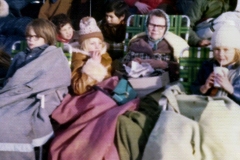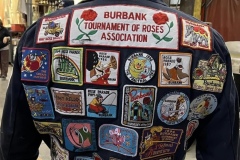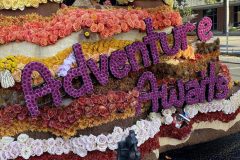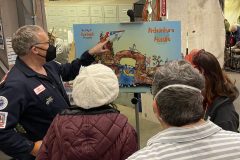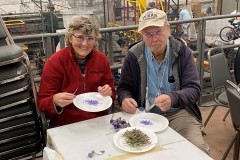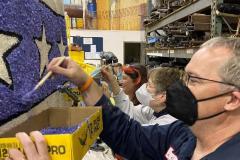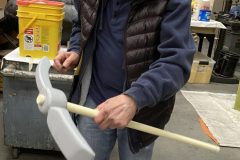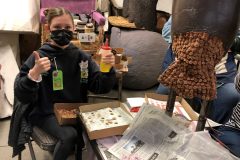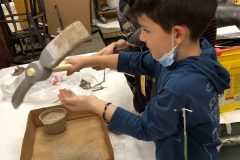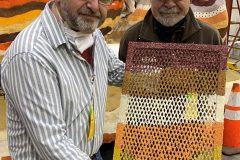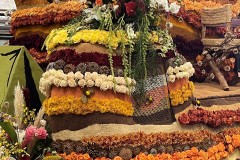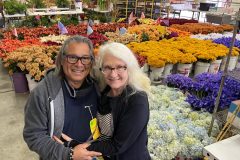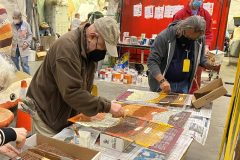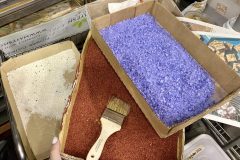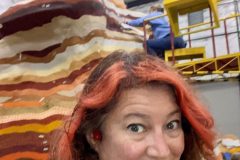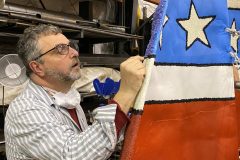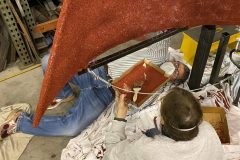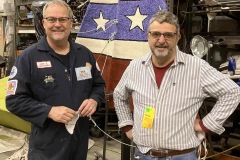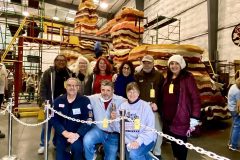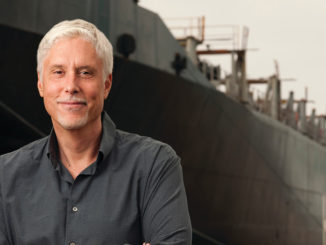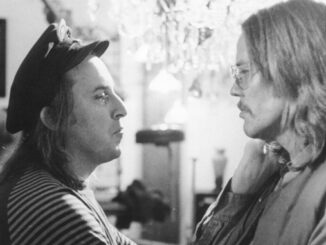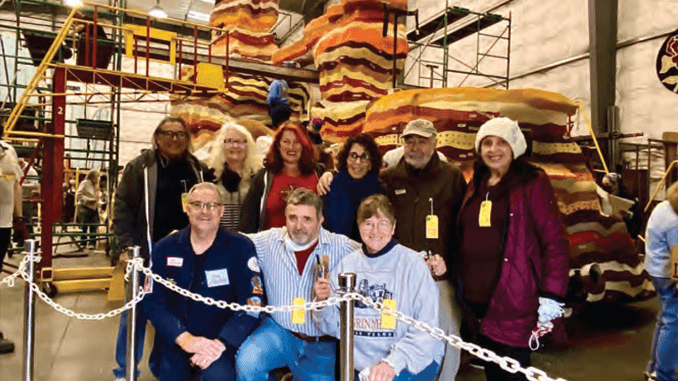
By Erik C. Andersen, ACE
Sometimes you need to get out of the cutting room and smell the roses. One of the best parades in the world is the Pasadena Tournament of Roses Parade every Jan. 1. What makes this parade so special is the flower-decorated floats. These ephemeral, one-of-a-kind pieces of art captured my imagination as a kid.
If you live in Los Angeles, you can see the parade in person. I saw my first live parade in 1976 and it was cold but very magical. A few years later my grandmother, Dorothy, saw an ad in the newspaper that read, “Volunteers needed to help decorate the Burbank float.” My parents took my sisters and me down to the Burbank float barn to decorate and I instantly got hooked.
Since then I have designed five floats for the parade, and I am currently serving on the Burbank Tournament of Roses Assn. board as historian. This year will mark the 40th float I have helped decorate for the City of Burbank.
When I started decorating the Burbank float, mainly mums and roses were used. Today, hundreds of different materials are used to decorate the float. For instance, I was the decoration chair on the 2020 rose float, “Rise Up,” where I was responsible for determining the flower types and colors, the quantity necessary and for placing the orders with adequate time for the venders to grow and deliver them in time for deco week.
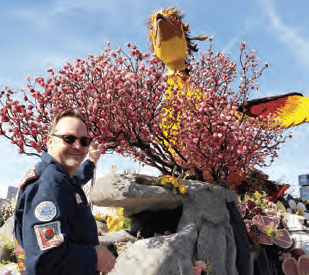
I love discovering different types of materials to decorate the float. For the phoenix head, I needed a material that would simulate bird feathers. I collected dried palm fronds from my yard and magnolia leaves from outside of my cutting room. Now I could have used them in their natural state, but I needed color. I decided to cover them with paprika and yellow strawflower. I call this technique deco on deco.
Some of the best floats I’ve decorated are the ones I’ve designed. It’s similar to editing in that you begin with a script and it ends up being a movie — of course with a little editing in between. With a float, you come up with an idea, draw it on paper, help build and then decorate it. It’s such a thrill watching talented volunteers come together to bring a vision to life.
This year’s float was called “Adventure Awaits.” I was the decorating supervisor of the hang glider. Suspended at the top of the float, 20 feet off the ground, it was going to be a challenge. Luckily the glider was removed off the float to be decorated.
The flowers and seeds are placed on the float the last week of the year (Dec. 26-31). Deco week requires hundreds of volunteers to make the float come to life. I’ve had so much fun doing this, I thought it would be cool to invite my fellow Guild members to help and get them out of their cutting rooms and dub stages.
Margaret Guinee was the first to take me up on my offer. She, along with her husband Bill, cut statice that was used to decorate the blue part of the hang glider. Cutting statice is one of the most tedious jobs so I asked her what she thought. “Helping work on the float reminded me of being an assistant editor, intending to some of the small details that seem almost trivial. But when you see the whole, you realize that those hours spent carefully cutting blue statice contributed to something important,” Guinee said.
I had Sidney Wolinsky paint the mountain climber’s axe while the rest of his family painted and started decorating the glider. “While we were all given tasks, for me the most gratifying part of the experience was watching my grandchildren, Ari and Greta,” he said.
I love inspiring our young volunteers to “get hooked” on decorating the float, so when Greta snuck off to help decorate Hamilton the eagle, I was thrilled. Even my own granddaughter, Payton, is now decorating the float with me. She is having so much fun that I sometimes have to stay late because she’s not ready to go home.
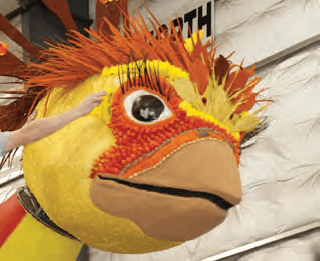 At one point, I had too much help so I sent Molly Shock, Denise Barbass, and Paula Shanfield to the flower cage to prep the flowers. I tasked Alan Heim, Glenn T. and Jennifer Morgan, F. Hudson Miller and Patricia A. Kennedy to decorate the speaker covers. Being a longtime supervising sound designer/editor, Glenn T. Morgan said, “Me? Decorating the speaker covers for the float? Such a sonic idea!”
At one point, I had too much help so I sent Molly Shock, Denise Barbass, and Paula Shanfield to the flower cage to prep the flowers. I tasked Alan Heim, Glenn T. and Jennifer Morgan, F. Hudson Miller and Patricia A. Kennedy to decorate the speaker covers. Being a longtime supervising sound designer/editor, Glenn T. Morgan said, “Me? Decorating the speaker covers for the float? Such a sonic idea!”
As they applied red strawflower, coffee husk, crushed white bean, crushed red lentil, yellow strawflower and crushed cocoa bean, Alan Heim said, “I loved applying strange items to the speaker grilles. Felt like a kid getting glue on myself.” F. Hudson Miller added, “I was surprised how similar float decoration is to sound editing. Both are an additive process in which many team members build a tapestry out the tiniest bits and pieces.”
Meanwhile, Molly Shock helped put water into 1200 vials for the roses and trimmed the leaves from 300 hydrangeas before I got her to slow down and help me decorate the glider. Molly said, “You need glue painted on a 12-foot canvas (white cocooned screen) so that sweet white rice, burgundy cranberry seeds, and dried blue flower statice petals can be carefully applied by hand? I’m your gal!” Thanks to everyone’s talent and hard work, the speaker covers, climber’s axe, eagle, and hang glider got done early and they were ready to be placed on the float.
My personal goal with our organization is to one day bring home the Sweepstakes Trophy for most beautiful entry. This is a very big goal because being a self-built float, meaning it’s completely constructed and decorated by volunteers, we don’t have the budgets that the professionals do. A normal float costs $350,000. We have a budget of $71,000. Our volunteers are so talented that I believe we can win that award. We came very close with 2020’s “Rise Up,” and brought home the Leishman Public Spirit Award for most outstanding floral presentation. Not too bad for a self-built float.
As our float “Adventure Awaits” went down Colorado Boulevard, I took great pride knowing I had a small hand in its creation. Working on a rose float is a unique experience and a great way to start the new year.
Burbank’s float went on to win the Queen’s Award for most outstanding presentation of roses. I hope this becomes a Local 700 tradition.
Erik C. Andersen is a picture editor and Local 700 board member who serves on the publications committee.

